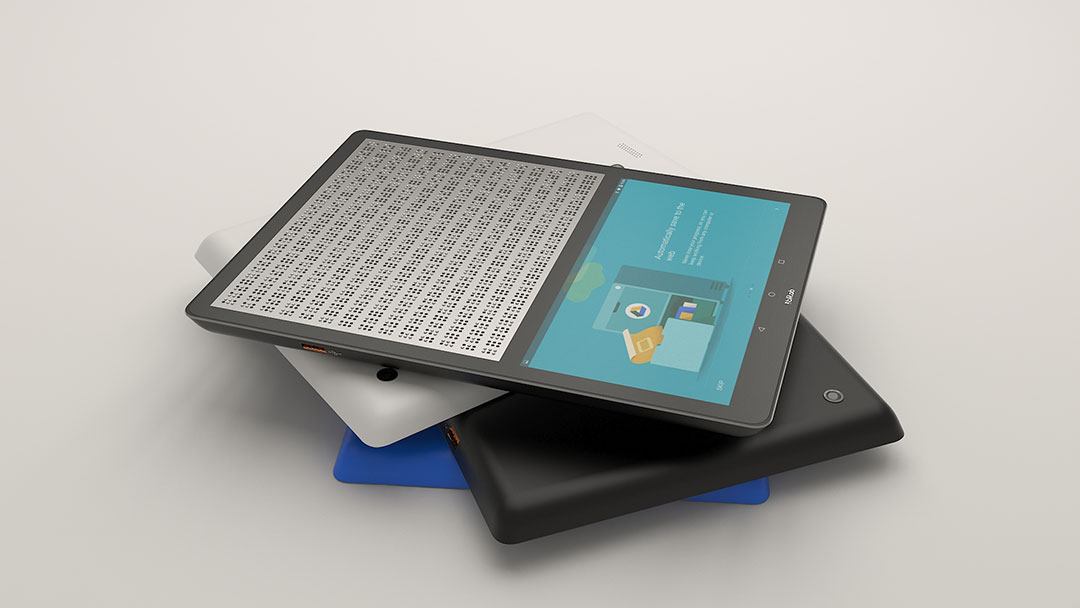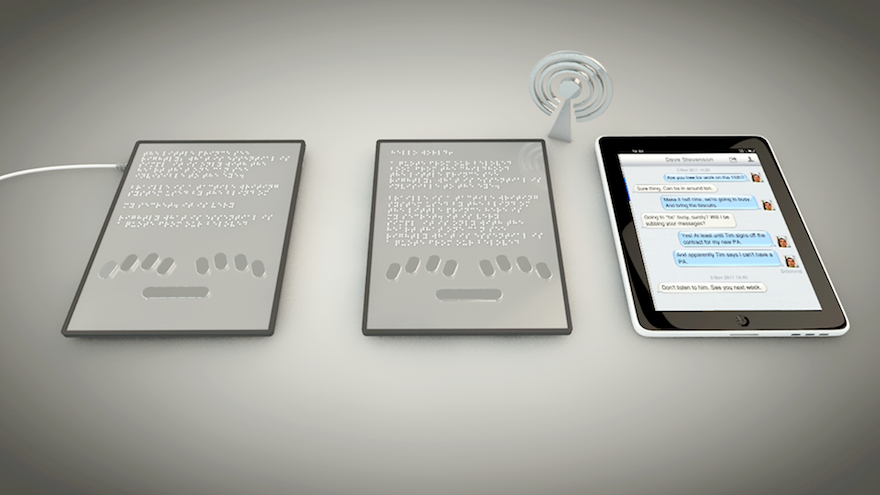AI-Powered Visual Aids: Redefining Support for the Blind
AI-Powered Visual Aids: Redefining Support for the Blind
Blog Article
Empowering Self-reliance With Assistive Technology for the Blind
The integration of assistive technology into the lives of individuals with visual impairments stands for a substantial development in advertising self-reliance and self-sufficiency. From ingenious screen visitors to innovative wise walking canes, these devices not only enhance daily navigation and communication but also empower users to involve meaningfully in numerous aspects of life. As we explore the myriad advantages and real-world applications of these technologies, it becomes important to analyze the hidden variables that contribute to their performance and the potential for future growths in this crucial area.
Review of Assistive Technology

The advancement of assistive modern technology is grounded in principles of inclusivity and empowerment. Innovations in software application, hardware, and sensory enhancements give users with choices tailored to their specific demands. From screen readers that convert message to speech, to responsive tools that share details via touch, these tools change the method individuals engage with their surroundings.
In addition to practical applications, assistive modern technology fosters higher social addition and engagement in different markets, consisting of education and learning and work (Wearable technology for low vision). As r & d remain to progress, the possibility for assistive innovation to better enhance the lives of aesthetically impaired individuals remains promising, leading the way for a much more equitable society where everybody can flourish
Kinds Of Assistive Gadgets
A range of assistive tools have arised to support people with visual disabilities, each designed to fulfill specific demands and improve daily performance. These devices range from low-tech solutions to modern advancements, supplying diverse options for customers.
Low-tech gadgets consist of magnifiers and large-print materials that aid in analysis and writing. Braille tools, such as Braille styluses and slates, enable tactile reading and interaction. Orientation and flexibility help, like white canes, aid users navigate their environment safely.
On the greater end of the spectrum, electronic magnifying systems and display readers use considerable support. Digital magnifiers permit customers to enlarge message and images on screens, while screen viewers transform digital material right into manufactured speech, facilitating accessibility to information on computers and mobile phones.
Smartphone applications also play a critical duty, offering functions like text recognition and navigation assistance. Wearable technology, such as smart glasses furnished with increased truth, is arising as a promising tool to improve situational understanding.
Benefits of Assistive Innovation
The integration of assistive technology dramatically improves the quality of life for people with visual disabilities. These technologies equip individuals by advertising independence, enabling them to browse their environments more successfully and execute everyday jobs with higher ease. For instance, display viewers and magnifying software allow people to access digital information, cultivating educational and expert chances that may have formerly been out of reach.
Furthermore, assistive gadgets such as smart walking canes and GPS applications provide real-time navigating support, improving wheelchair and security. This enhanced autonomy not only enhances self-confidence however also encourages social engagement, allowing customers to take part even more totally in their More about the author areas.
Assistive innovation also helps with communication, assisting individuals attach with others with voice recognition and text-to-speech applications. This ability is essential for maintaining partnerships and accessing critical information.
Additionally, the customization options offered with many assistive technologies ensure that customers can customize devices to their specific requirements, further boosting functionality and performance. Generally, the benefits of assistive technology for people with visual disabilities are profound, advertising a much more inclusive society where everybody can pursue their goals and desires.
Case Studies and Success Stories
Highlighting the transformative influence of assistive technology, many study illustrate just how people with visual impairments have efficiently incorporated these tools right into their every day lives. One engaging example involves an best eyeglasses near me university trainee who utilized display analysis software application to browse scholastic materials and online sources efficiently. This innovation not just promoted her education and learning yet additionally boosted her self-confidence in taking part in discussions and team jobs.
One more situation research features an expert who utilizes a smartphone application made for navigating and object acknowledgment. By using this app, he has restored autonomy in both his personal and job environments, allowing him to commute independently and involve with colleagues better.
Furthermore, a retiree shared her experience with braille e-readers, which allowed her to access a vast array of literary works and remain gotten in touch with her area via publication clubs.
These success tales underscore the essential duty of assistive technology in cultivating freedom, improving quality of life, and advertising social assimilation for individuals with aesthetic impairments (Braille displays and notetakers). By accepting these innovative devices, users can conquer obstacles and take chances that add to their professional and personal fulfillment

Future Trends in Assistive Technology
Advancement in assistive technology is poised to redefine the landscape of support for people with visual disabilities. Emerging fads stress the combination of artificial knowledge (AI) and artificial intelligence, which enhance the functionality of devices that help with navigation and details availability. For example, AI-driven applications are now capable of interpreting visual information in real-time, enabling users to involve with their environment extra independently.
Additionally, the development of wearable technology is advancing rapidly. Smart glasses furnished with increased reality (AR) can give audio descriptions of environments, changing how customers interact with public spaces. These gadgets not only advertise autonomy but likewise foster social addition.
Furthermore, the Net of Things (IoT) is making homes smarter, allowing for seamless connection between assistive tools and get more day-to-day home appliances. This connectivity empowers customers by enabling voice-activated controls and computerized actions tailored to specific needs.
Verdict
To conclude, assistive modern technology plays a crucial function in encouraging individuals with aesthetic problems by boosting their self-reliance and interaction with their surroundings. The varied range of applications and devices readily available not just facilitates navigating and communication but additionally advertises social integration and possibilities for personal and professional development. As innovations continue in this area, the capacity for improving the lifestyle for those with visual disabilities will certainly expand, fostering higher freedom and empowerment.

Report this page